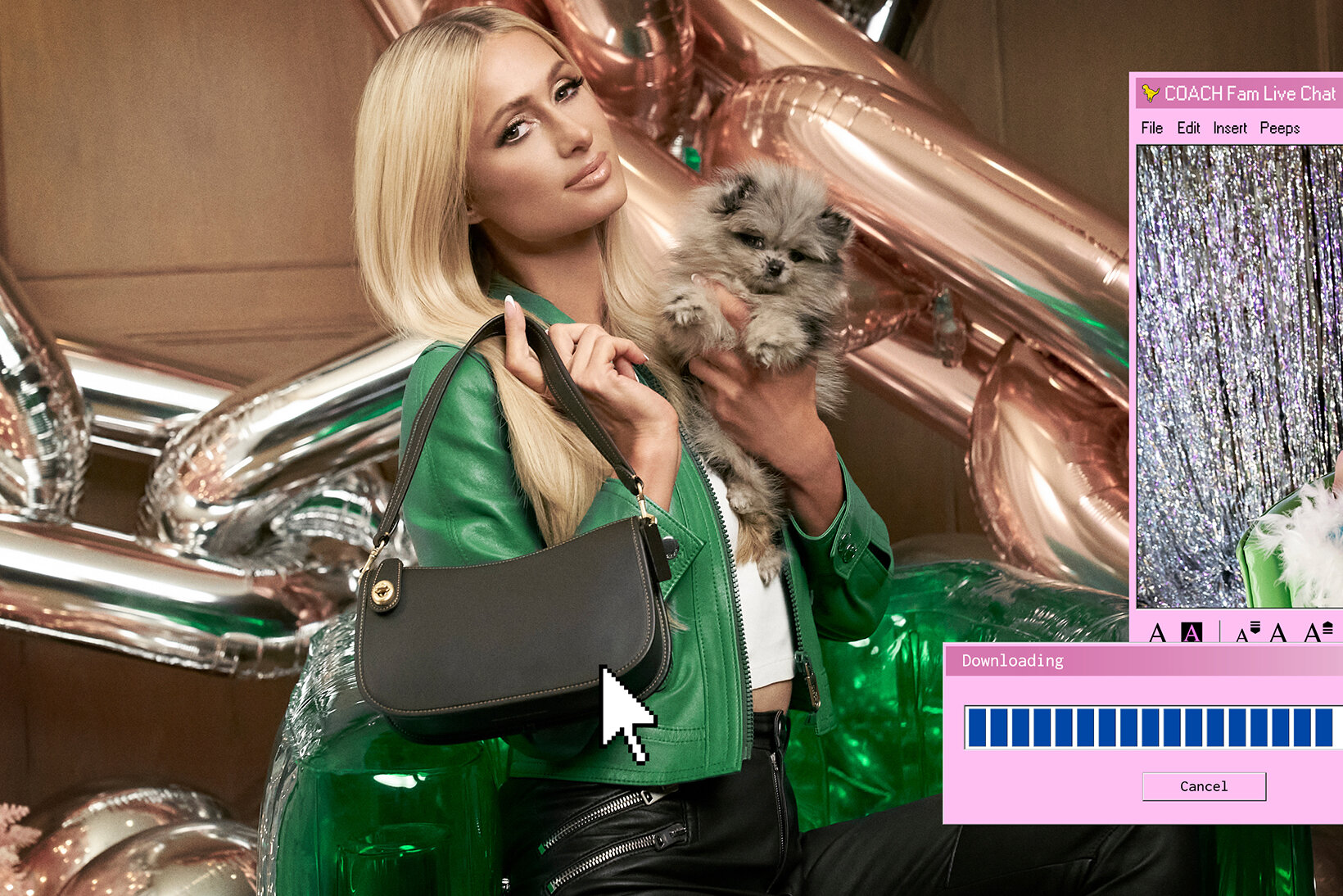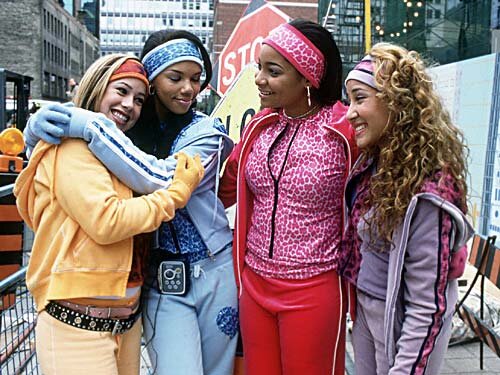Everything You Need To Know About the Y2K Aesthetic and Its Comeback
By: Morgan Sullivan
Saved in the depths of my Spotify library is a playlist titled, “You’re the main character of an early 2000s coming-of-age movie.” Can you pinpoint the last time you heard “These Words” by Natasha Bedingfield? I can. It was an hour ago.
It seems that I’m not alone in my nostalgia for the decade, either. Right now, Depop listings for Nike tennis skirts cost upwards of $100, while celebs like Rihanna and the Hadids have been sporting the nostalgic mini shoulder bag. More recently, in December 2020, Coach partnered for a campaign with the defining woman of the decade: Paris Hilton.
So, in came the (dreaded) low-rise jean. Then the Juicy tracksuits quickly followed — and speaking of Juicy, they just partnered with Parade in December 2020, releasing a blinged-out underwear line with the iconic Old English text logo plastered on the back. It’s as good of a moment for velour as it is for anyone who has recently overplucked their brows on accident.
If all of this doesn’t make you want to find a black spaghetti-slip dress and post an Instagram pic like you’re one of the Olsen twins, I don’t know what else will. But, before you snap that shot, you might ask the pressing question: Why is the Y2K aesthetic making such an aggressive comeback?
The 20-Year Rule
“Y2K” is an amorphous term to highlight the fashion of the late 90s and early 2000s. The popularity of this trend is mostly due to the cyclical movement of the fashion industry, which predicts that something that was once popular will come back into style with modernization every 20 years. Pantone just forecasted some pretty bold colors for Spring ‘21, too. So if you’re not feeling like going full-blown Simple Life with your fashion choices, know that Marigold and “Amethyst Orchid” are among some of the hues predicted to be popular in New York soon. These, of course, are reminiscent of the bold, excessive hues seen in the ‘00s.
Gen-Z Has Some Drive Here
Log onto TikTok and you’ll be sure to come across some frosted-lips and butterfly clips. The reason? The #Y2K Hashtag on the platform is currently at 847.7M views. (One TikTok user, @shinypretties, has even gained a following just for flipping through old magazines from the era.) With brands reimagining toys, treats, and even relaunching makeup product lines — from Lip Smackers sets to Morphe’s Lisa Frank rollout — sappy feelings for the period are sure to be evoked.
… And So Does Instagram
Lauren Conrad screen grabs. Hello Kitty memes. Lizzy Mcguire GIFS. One Instagram account, @y2kdaily, has a following of 10.8K for posting “nostalgic archives.” Among the content is a spoof of Spotify’s wrapped (Limewire Wrapped: 1120 new songs and 8 viruses transferred to your computer) and an ode to Brad and Jennifer Aniston. Of course, fashion remains as prevalent on Instagram as it does on Pinterest mood boards: platforms, cropped cardigans, argyle vests, and fringed bucket hats are among some of the looks seen on the platform.
Familiarity is Our Friend
Of course, this aesthetic has existed before 2020, but it has done exceptionally well for one reason: nostalgia sells. When the uncertainty of the pandemic hit, buyers reached for items that were reliable and safe. Social and emotional connection to a product can be the driving force for you to purchase, so next time you find yourself purchasing something weird — Chia pet? Dunkaroos? — know that it could be due to the anxiety of the unknown.
That said, anyone wanna bring back AIM? I’ve been thinking of possible screen names all week.


